You know a bonsai show is close when someone asks you for the sock during workshop. “The sock,” in Bay Island Bonsai parlance, refers to a sock filled with crushed walnut meat. Walnut oil is great for cleaning bonsai pots and juniper bark for bonsai exhibits. And the effort required to apply it is well worth the time.

Western juniper – trunk detail
Simple how-to: 1) fill sock with walnut meat; 2) tie knot in sock; 3) crush walnut meat with hammer. When the oil seeps through you’re ready to go.
It’s surprising how much oil a few nuts provide. For all but the largest exhibits, just a sock or two can do the trick.
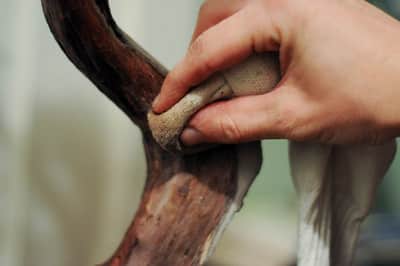
Oiling the trunk
Because junipers frequently present twisting mixes of live and dead wood, it requires care to keep the oil off the deadwood. And while the decision to oil or not oil juniper bark can make for good debate, I have yet to hear a good argument for oiling deadwood.
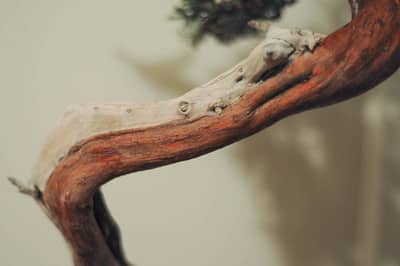
Trunk before oiling
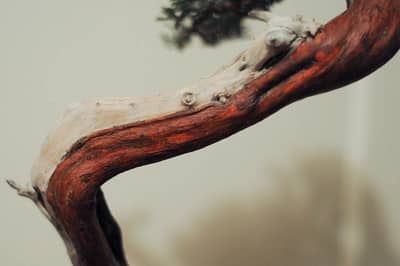
Trunk after oiling
The results can be just as dramatic for pots. Apply when the surface of the pot is clean and dry.
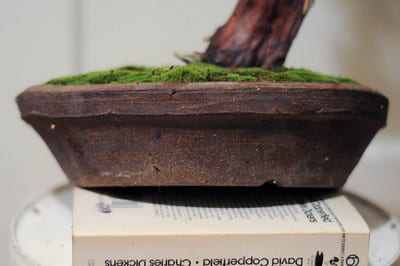
Pot before oiling
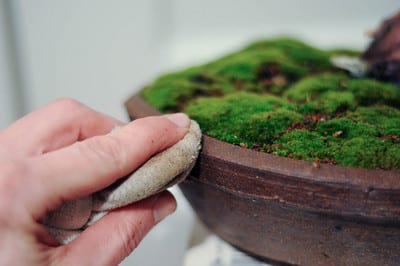
Oiling the pot
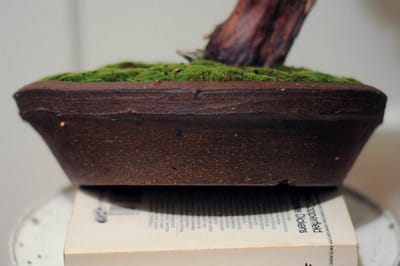
Oiled pot
Ideally, a pot will hold enough oil to deepen the color, but not enough to hold a fingerprint. Rubbing away excess oil after application helps, but the best trick is to apply the oil a week or two ahead of the exhibit. This dulls the shine just enough. And if too much fades, touch up the tree with the sock before heading to the exhibit.
Subscribe to Bonsai Tonight
New Posts Delivered Every Tuesday and Friday
bonsaigeek says
im trying to make juniper bonsai from cuttings, they are still in a small pot
think itll take them ages to become like the bonsai in the pic o.O
have a nice day
Bonsign says
I read it as as Walrus meat,kind of like Whale oil or something.